Google Nexus 7 and Android 4.1 - Mini Review
by Brian Klug on June 28, 2012 3:25 AM EST- Posted in
- Tablets
- Smartphones
- Mobile
- Nexus 7
- Android 4.1
Android 4.1 is the newest release of Android, and in keeping with the dessert-alphabet naming scheme, goes by the name of Jelly Bean. Henceforth you'll see JB or 4.1 interchangeably. Google sampled me another Galaxy Nexus, running the same build of Android 4.1 that was handed out to Google I/O attendees today. This isn't the final version that will be pushed out in July, but is close to final – or at least final enough to give to a few thousand attendees and press.
I mentioned in the pipeline post about Android 4.1 that I heard UI performance was going to be a big emphasis in 4.1, that Google wanted to make the UI "smooth as butter" everywhere possible. Today seeing the announcement of Project Butter comes as no surprise, and represents further optimization to the hardware accelerated OpenGL ES render path that was introduced in Android 3.0 Honeycomb, and further improved in Android 4.0.x with more graphics primitives, making moving to it easier for developers.
In Android 4.1, the improvements that are under Project Butter are really four things:
- Improved 60 Hz Vsync timing from the Android drawing framework for individual applications. That means render path, touch, and display composition now take place on a 16 ms step.
- Triple buffering for the UI, which I believe previously could be enabled, but only in individual OpenGL ES instances. The Android 4.0.x UI did not have triple buffering enabled as it now is.
- Changes to the CPU governor which now send the SoC into its highest performance state as a function of touch interaction. I'm still eager to learn more about this in an upcoming session, but Android now better handles the latency associated with changing P-states on SoCs and getting into that maximum state when you're aggressively scrolling and panning.
- Enhancements to analysis in the form of Systrace for seeing the actual time spent in each part of the render process for a frame. This is being pushed out in the new Android SDK and there are obvious hooks into it under Developer Options inside 4.1. Google also gave us a glimpse of that earlier today.
The result of these improvements is that the Galaxy Nexus feels like a different device to me with Android 4.1. It isn't huge, but the trouble spots that used to annoy the heck out of me with Galaxy Nexus and 4.0.4 are now largely smoothed over. That's not to say it's perfect, but it's clear Google has invested time (finally) into mitigating some of Android's lingering UI choppiness.
I wanted to show this on video, however my DSLR only captures at 24 FPS which would make it pretty difficult to see dropped frames. I brought my other Galaxy Nexus with 4.0.4 and put it alongside the 4.1 device, and there's a substantial difference in trouble areas.
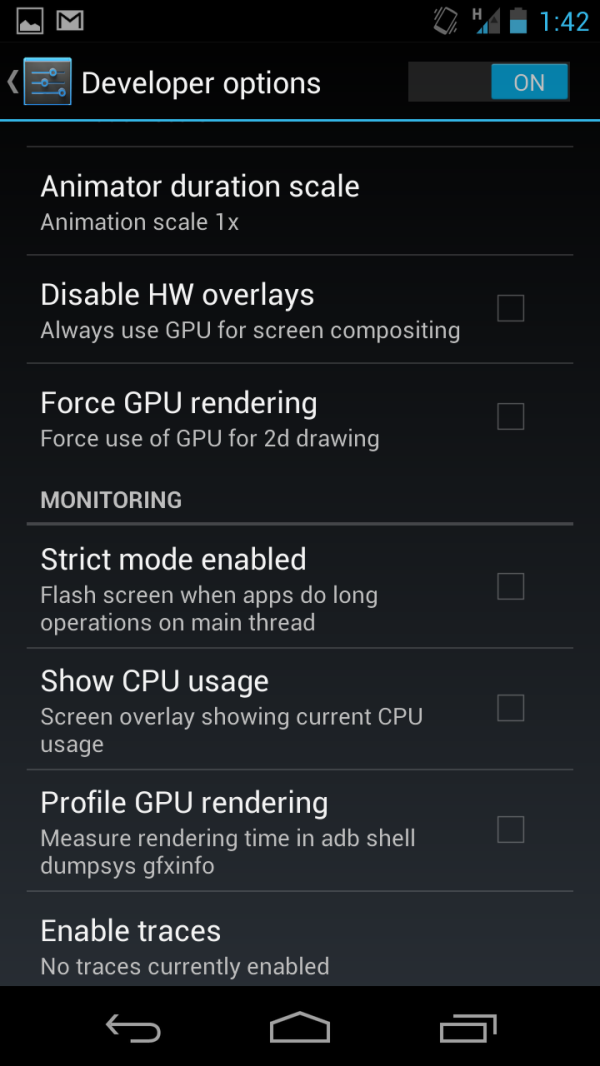
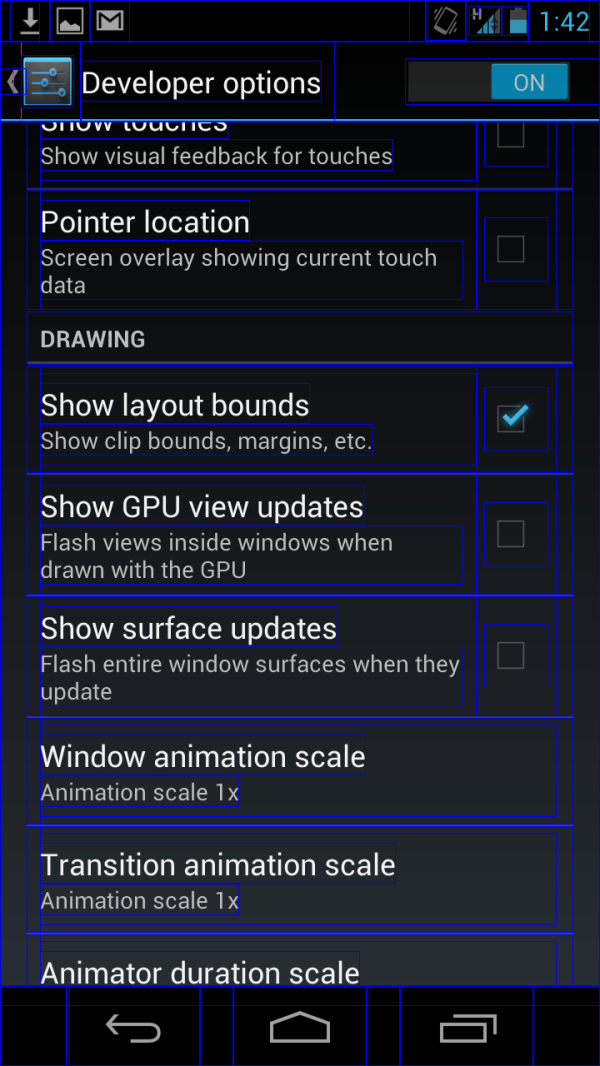
Additional GPU related drawing debugging under Developer Options
Some of those trouble spots included: scrolling the applications launcher into the widgets tab, the task switcher, screenshot compress and fade animation, application launch / close, and scrolling list boxes. In the case of the task switcher (which was not smooth in 4.0.4), the animation is now finally one that doesn't drop frames left and right. It is a huge difference. The others just feel better. I've also noticed that a number of other primary UI transitions have been somewhat simplified from a squeeze and fade to just a translation up or down across the screen. I think some might make the case that this is just optimization by removing transition flashiness, but on the whole the result is a much snappier interface.
I still feel like the SGX 540 running at non-max clocks inside the Galaxy Nexus' OMAP4460 is overburdened, but with the right SoC Android 4.1 is going to scream. On the Nexus 7, the interface is very close to being fluid everywhere. I'm very impressed with performance on that device.
While we're talking about settings related improvements, the settings page gets some reorganization, including putting accounts right on the settings page, and under WiFi are new toggles for WiFi direct, and WPS pairing. Google has also changed up the toggles in 4.1, from the slanted, almost razor-blade like sliders to just plain switches. Another subtle thing is a change under About Phone -> Status: the network type indicator now shows "HSPA+" instead of "HSPAP" which previously confused users.
There are some other new UI related 4.1 features. First up, notifications shade gets a dramatic improvement, including support for action to be taken right from the notification menu, such as dismissing a calendar alert, declining a call, or sharing photos. The top entry in the list also gets shown off in a larger box, and includes more detail. The bar also includes a rotation lock for tablets, and moves higher up on the display, obscuring the status bar indicators. The lock screen also gets an updated look, and a shortcut to Google Now.
Widgets are also automatically resizeable and reposition themselves in 4.1, which is a subtle but important improvement over the rigidity of the AOSP home screen in 4.0. I feel like a lot of these subtle improvements are inherited from various skins and 3rd party customizations, which makes sense. Third party widgets will need an update to support official resizing.
The keyboard also gets some improvements, including support for additional languages, and an expanded dictionary. One subtle change is that when you have the keyboard up, the back symbol changes to a down caret, which will no doubt make that UI step easier to grasp for new users.
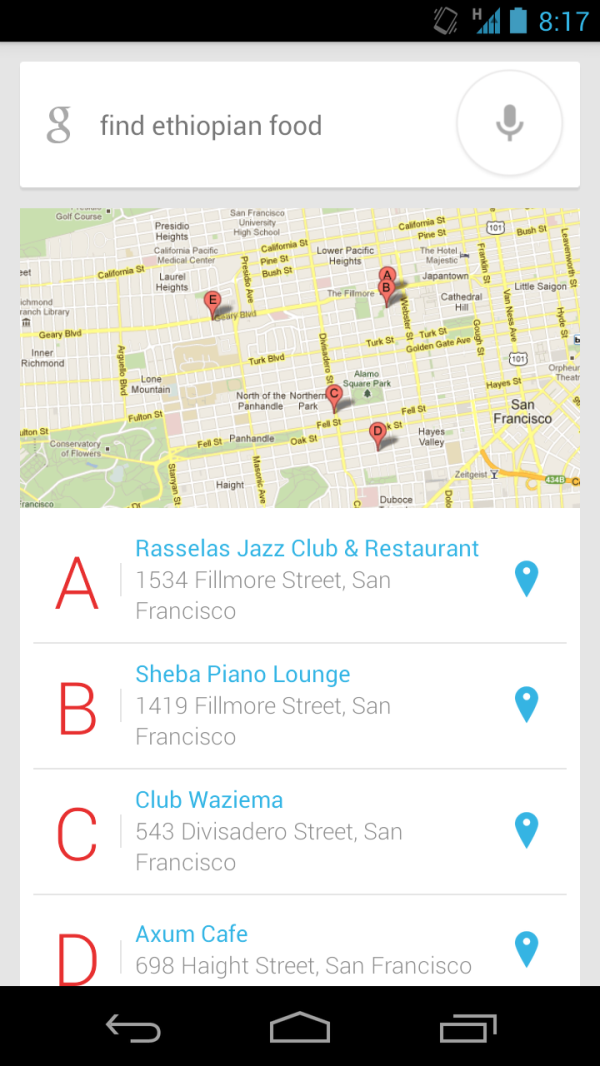

Left: Another Google voice search query, Right: New intents picker
Google's answer to Siri is a two pronged approach - improved voice search with offline voice recognition, and semantic data results to those queries. In practice, the use paradigm is almost exactly like Siri, though the approach Google demonstrated is a bit less conversational. I have only had time to ask a few queries (such as the above search for a camera store for a new battery charger), but voice recognition does indeed work with no cellular connectivity, though you do lose the confidence level underline under words. Part of the better Google search idea is Google Now, which Google believes so strongly in, it dedicated an entire shortcut to it.
Camera UI gets an overhaul and now reminds me of the Windows Phone 7 approach. You can swipe left to view the previous captured images, while the live preview remains live and slides off the screen. Photos can be deleted by then dragging up, like dismissing a card in webOS. This is also nice and smooth throughout. Android 4.1 also adds a new capture animation, but oddly enough I couldn't grab a screenshot of it.
| Android 4.0.4 vs 4.1 on Galaxy Nexus | ||||||||
| Location | WebKit Version | HTML5test.com Score | CSS3test.com Score | Sunspider 0.9.1 | Browsermark | |||
| Android 4.0.4 | 534.30 | 280 + 3 bonus | 49% | 1830.9 | 99493 | |||
| Android 4.1 | 534.30 | 281 + 3 bonus | 49% | 1411.8 | 125103 | |||
While the Nexus 7 formally replaces Browser with Chrome (sans beta as of today), Android 4.1 proper on the Galaxy Nexus and other devices will retain Browser for some time. That web browsing experience gets improved in 4.1 with better support for HTML5 video, better rendering performance and memory usage, and further improvements to the V8 JavaScript engine. In browsermark and sunspider the difference in V8 is pretty dramatic, elsewhere there isn't a big change at all, as it's the same core version of webkit, just optimized more.
There are more changes as well, including binary diff / delta update support for updating marketplace applications. Google has done the usual thing and outlined all of those other changes on their developers page for Jelly Bean. It's impossible to pass judgment on Android 4.1 after just 12 hours with both an updated Galaxy Nexus (with my primary SIM inside) and the Nexus 7, but thus far the improvements to UI smoothness have made a noticeable difference. Beyond that, probably the second most appreciable difference is in notifications, which now conveys much more information for things like new mail beyond the subject line and sender. The other thing to note is that again, this Android 4.1 isn't 100% final, but it is extremely close. I haven't seen any glitchiness yet, but obviously there will be changes before the final mid-July OTA update for Galaxy Nexus devices and others that were announced in the keynote. I'm looking forward to digging up the other subtle things that are new in Android 4.1 and updating if necessary.


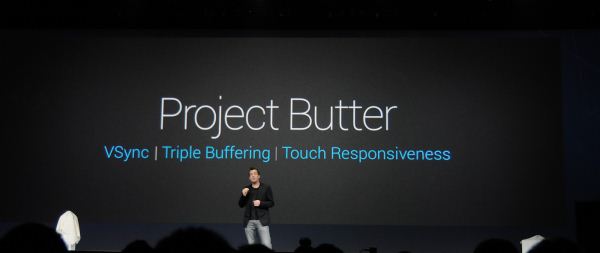
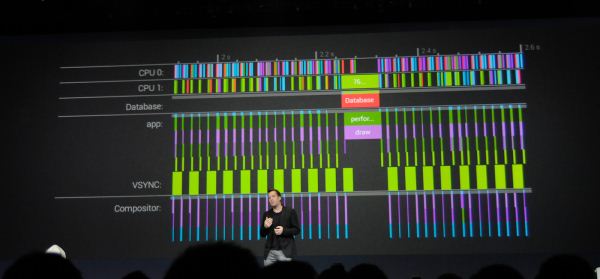
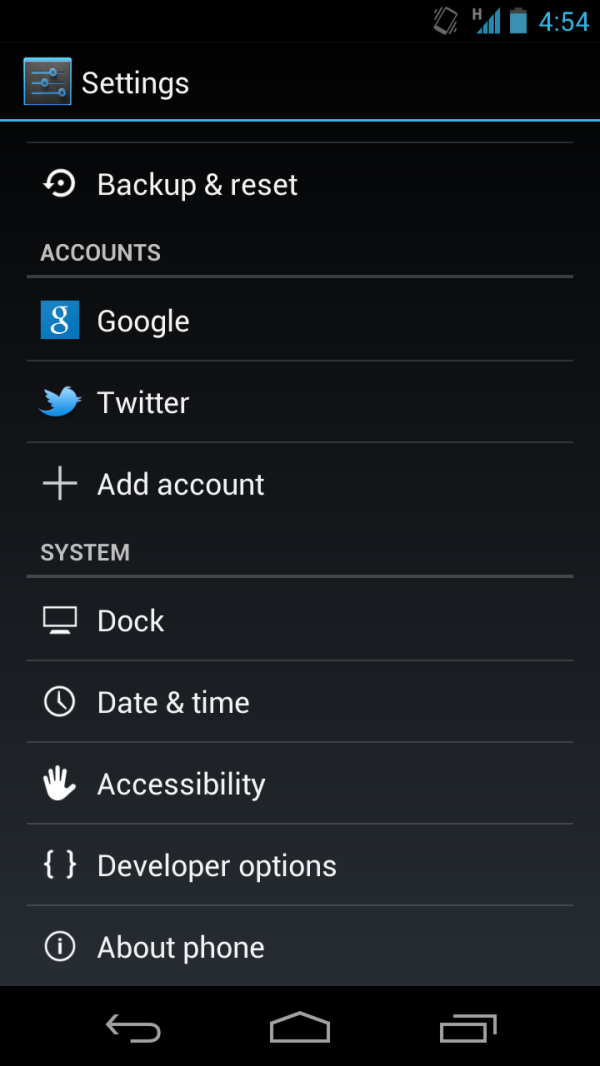

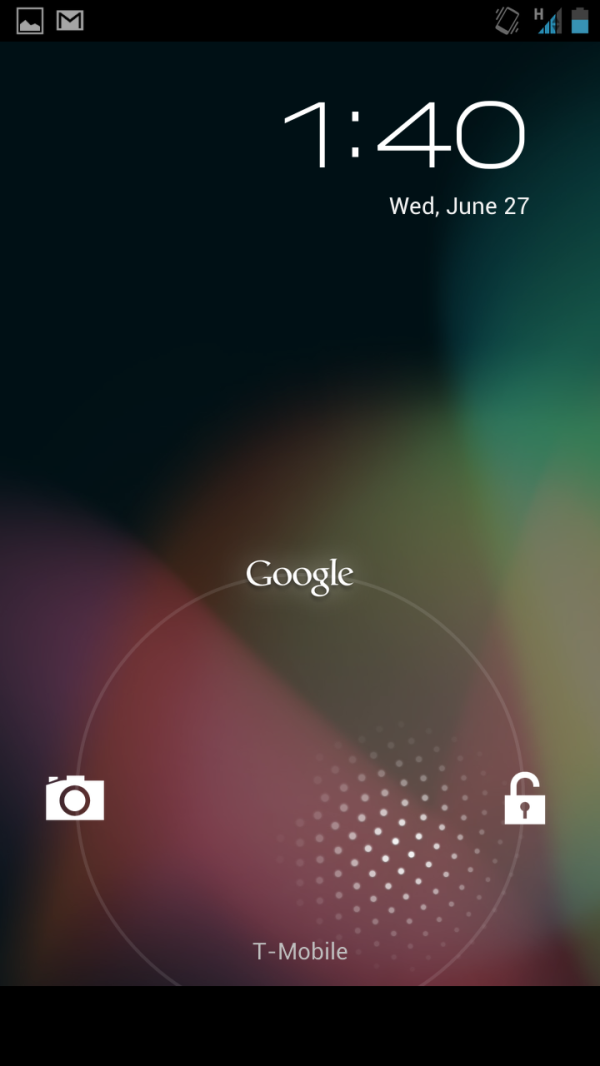

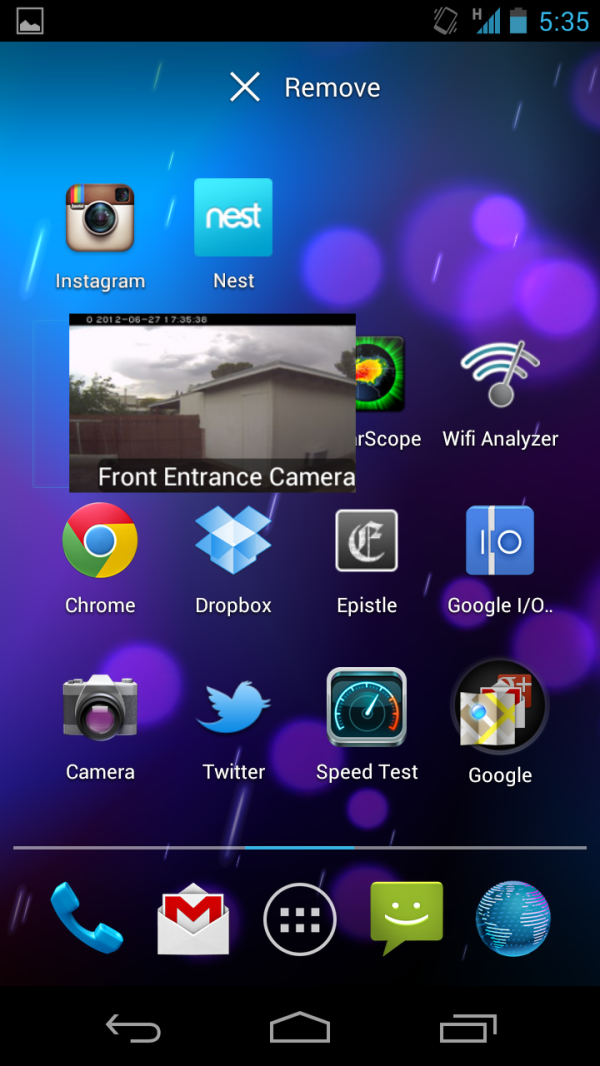
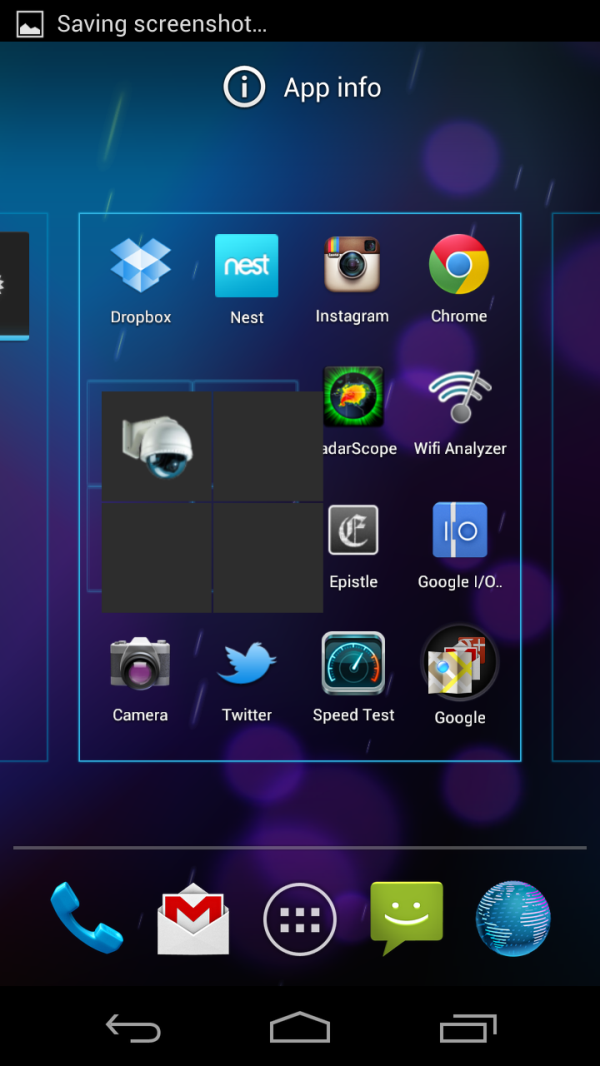

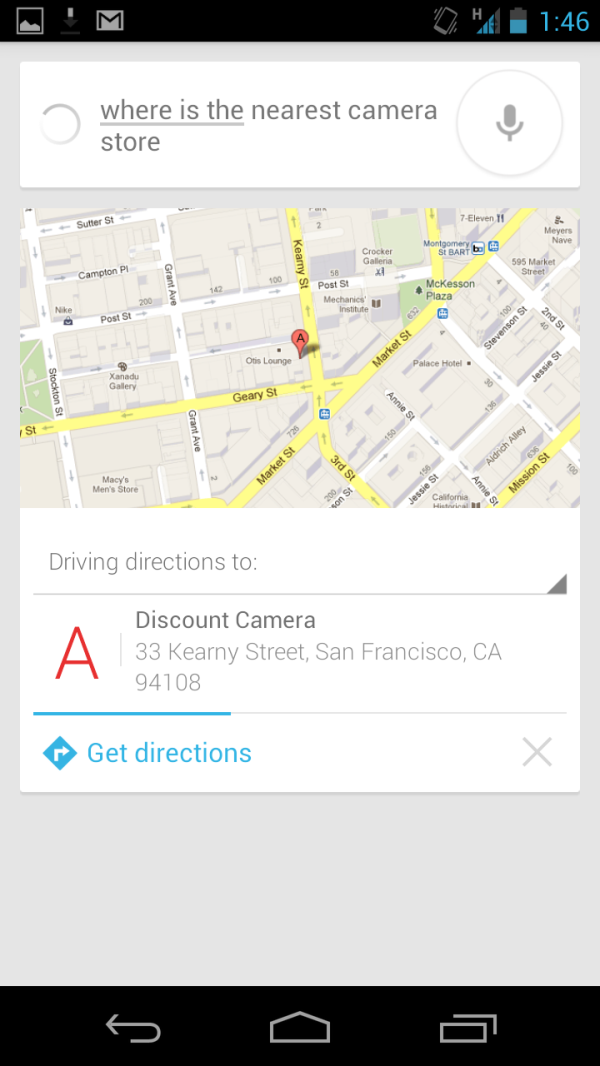














188 Comments
View All Comments
masterpfa - Thursday, July 5, 2012 - link
I personally, having used the GNex for over 7 months have found adaptation to non SD card availability, not such a bitter pill to swallow, only requirement is sufficient internal storage initially (unfortunately 16GB is not quite enough, I manage, but would prefer 32Gb min)Saroku - Wednesday, August 29, 2012 - link
You don't know very much. Internal Storage AND SD Cards use NAND. Samsung and Apple in my opinion are the only good companys in terms of storage. The iPhone has 64GB storage and the Galaxy S3 has 64GB plus micro sd slot so that you can have 128GB. And all the others? Only laughable 16(!)gb (16 and 128GB, thats a HUGE difference) or 32gb with no sd slot.Saroku - Wednesday, August 29, 2012 - link
Microsoft is doing it much better. Just like on Windows, you can just connect the Windows phone 8 in a Micro sd that will be threatened like for example an external HDD or a USB Drive Stick on a Windows PC. On Android, you can even use USB Sticks as external Storage. But why not Micro SDs? where is the point that they allow you to connect USB-Drives and external Harddrives via USB adapter to an android device, but not an SD-Card? HDD, USB, SD, the're basically all the same: External Storage.Saroku - Wednesday, August 29, 2012 - link
Very nice to be limited on storage just because google has this idealism of only one internal storage and no option to use something else. I hate it, in 2009 I knew that there will be 128GB sds in the next years and now we are close to that. But NO, google just now removes the ability to use the sds we waited so long for. So we are as limited on storage as we where a few years ago.coder543 - Thursday, June 28, 2012 - link
if Google didn't make and own Android, you mean?prophet001 - Thursday, June 28, 2012 - link
To some degree.The question in my mind is "Does Google give me the freedom to do what I want with what I own??"
The obvious answer (from not only Google but others as well) is No.
Microsoft makes and owns Windows but can you imagine what would happen if they forced everyone's information into their cloud? I can't even conceive of the Corporate, Private, and Governmental backlash to something like that. Contrast that with how Google approaches your (yes your) information and device rights.
monkeypenguin - Friday, July 13, 2012 - link
Remember Microsoft Kin?Arguably the first cloud based Phone OS.
fitten - Thursday, June 28, 2012 - link
Cellular isn't as big of a deal, IMO. How many people who have this will have a smartphone with them that can hotspot if you need that kind of connectivity?kkwst2 - Thursday, June 28, 2012 - link
Percentage of people posting here? Probably 75%. Percentage of potential market for this device? I'd guess more like 10-15%.mcnabney - Thursday, June 28, 2012 - link
How about percentage of people that can hotspot at no additional charge AND have unlimited data? T-mobile throttles very quickly and a throttled T-mobile or ANY Sprint is just going to be too slow to stream video.Google's plans revolve around the Cloud and heavy bandwidth consumption at the same time that wireless companies are erecting bandwidth meters. I'm sure that the wealthy iOS users won't mind paying $80-150/mo for a lot of GB on LTE through a hotspot, but Android users have historically been quite a bit more thrifty.